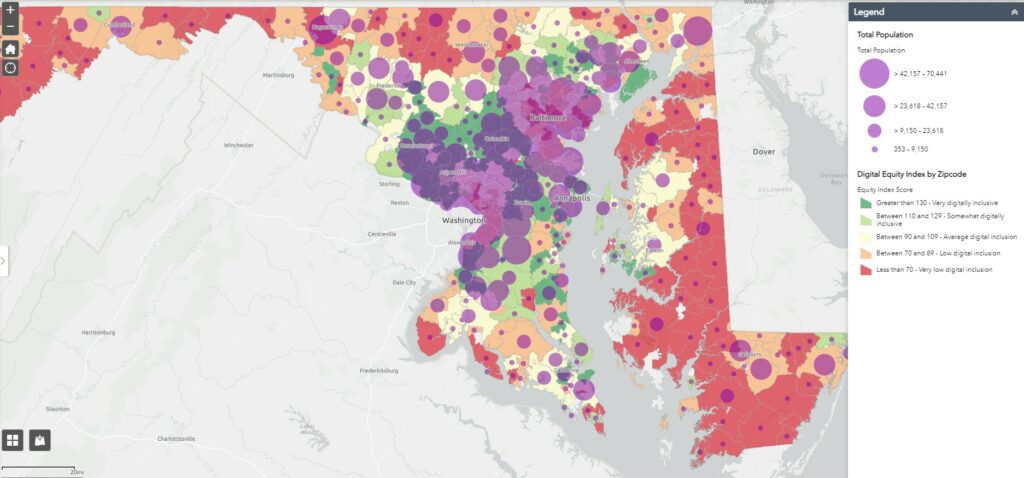



Hundreds of thousands of households in Maryland do not have a foundational tool for internet connectivity – a wireline high-speed internet subscription for their home. Expensive subscription plans tend to keep people offline in urban areas, while poor network quality often discourages subscription in rural areas. Both problems are common throughout the state. In both cases, understanding where these problems are most severe is critical for decision making.
Developed as a collaboration between John Horrigan of the Benton Institute on Broadband & Society, the Community Development Network of Maryland (CDN), Baltimore Neighborhood Indicator’s Alliance (BNIA), and Baltimore Digital Equity Coalition (BDEC), this new mapping tool sheds light on the geography of disconnection in Maryland and underscores the need for urgent action. It finds that nearly half, or 48%, of zip codes in Maryland score low or very low on the Digital Inclusion Index. Areas of high population density and areas of low population density are more likely to have the greatest needs.
Prior research has established that a two-thirds majority of disconnected Marylanders live in metro counties or Baltimore City. We also know that 40% of all Marylanders without wireline broadband are African American and the figures are similar for computer ownership of any kind (i.e., desktop, laptop, or tablet). Overall, nearly three-quarters of all disconnected Maryland households have incomes below the state’s median income. The map shows where high-speed internet subscription gaps are greatest – and by how much.
The Community Development Network of Maryland urges partners across the state to use the mapping tool to help close adoption gaps and address disparities.
Other Research & Reports